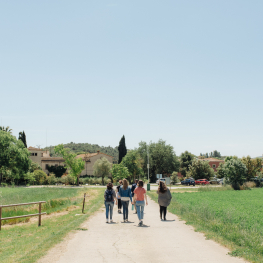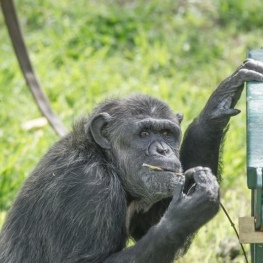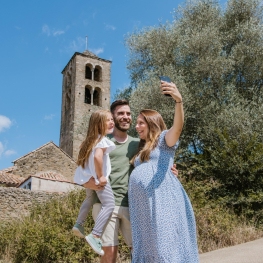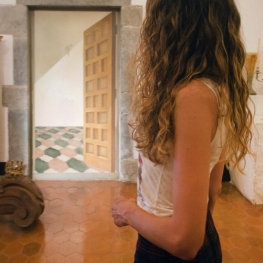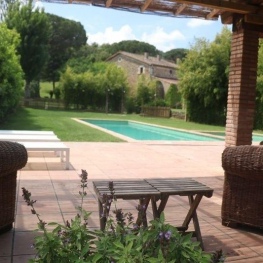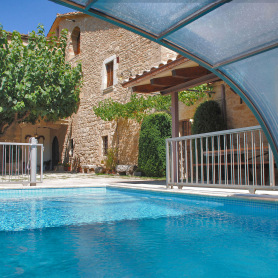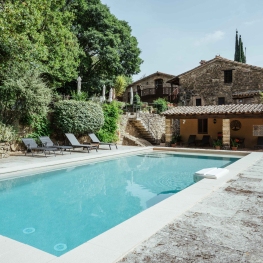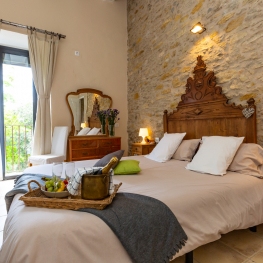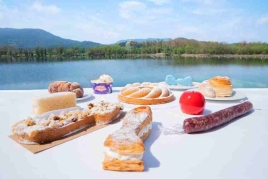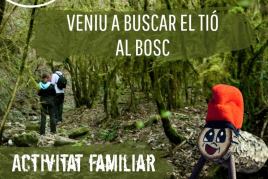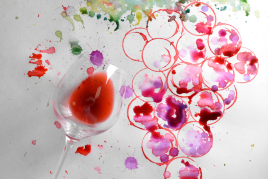The Jewish Girona
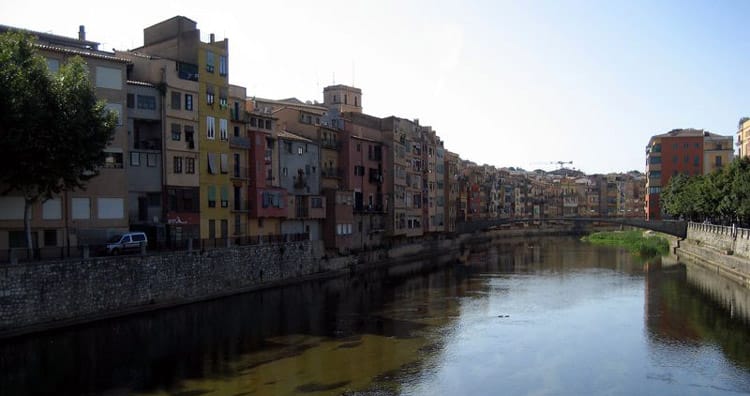
The narrow streets and stone-built wet Gerona allow us to enter into the Jewish past of the population and have an idea of ??what life was like the last millennium. Gerona has one of the calls (Jewish Quarter) best preserved of the peninsula, we have to use it. The buildings that still remain, as the home of the Jewish Council or the cemetery, and a very modern museum, allow us to contextualize the Jewish heritage and see how it has been integrated into the daily life of the Girona.
Inside the Call
 The Jews settled in Gerona between the tenth and fourteenth l beside Cathedral and the Calle de la Força current before Sant Llorenç Street as the center of activity. Its financial solvency and the acquisition of property to the city will be very prominent, done that pitted Christians who stopped receiving income from these new tenants and monarchs who accepted their presence and offered them protection. The last decades of Jewish presence in Gerona are characterized by the heavy pressure they received, they could not live outside the call and whether they would have to identify with a red circle. From this legacy we have the Jewish Quarter of Girona , one of the best preserved in Europe and you can learn about if you approach the city of Girona.
The Jews settled in Gerona between the tenth and fourteenth l beside Cathedral and the Calle de la Força current before Sant Llorenç Street as the center of activity. Its financial solvency and the acquisition of property to the city will be very prominent, done that pitted Christians who stopped receiving income from these new tenants and monarchs who accepted their presence and offered them protection. The last decades of Jewish presence in Gerona are characterized by the heavy pressure they received, they could not live outside the call and whether they would have to identify with a red circle. From this legacy we have the Jewish Quarter of Girona , one of the best preserved in Europe and you can learn about if you approach the city of Girona.
 We will start the tour of the Museum of Jewish History, has to enter into the so-called Bonastruc ça Porta Centre, Calle de la Força number 8 home owned by this physician and philosopher, one of the most prominent members of the community, great popularity in Catalonia and a street named after him in Jerusalem. This museum is dedicated to all medieval Jewish communities, but special reference to Girona. We about its history, culture, cuisine, customs, trades ... in short, the character that allowed the splendor of the Jewish community to the thirteenth century, although there were strong movements of rejection. It also contains the most important collection of Hebrew lapidary Spanish State. The museum is open daily from 10am to 18pm except Sundays and holidays it closes at 15h, entry is $ 2 and allows the use of an audio guide.
We will start the tour of the Museum of Jewish History, has to enter into the so-called Bonastruc ça Porta Centre, Calle de la Força number 8 home owned by this physician and philosopher, one of the most prominent members of the community, great popularity in Catalonia and a street named after him in Jerusalem. This museum is dedicated to all medieval Jewish communities, but special reference to Girona. We about its history, culture, cuisine, customs, trades ... in short, the character that allowed the splendor of the Jewish community to the thirteenth century, although there were strong movements of rejection. It also contains the most important collection of Hebrew lapidary Spanish State. The museum is open daily from 10am to 18pm except Sundays and holidays it closes at 15h, entry is $ 2 and allows the use of an audio guide.
 The house Bonastruc ça Porta Boschmonar together with the house at number 21 Carrer de la Força, is believed to be where the fourteenth century had located the two synagogues that coexisted for a few years, were the schools, baths and houses of worship Jewish community. But apart from some signs are not precisely known locations of the main buildings of Jewish life and therefore we recommend walking through this neighborhood, between the Cathedral and the University, with eyes wide open to capture all the details you can, thus enjoying the old alleys Gerona .
The house Bonastruc ça Porta Boschmonar together with the house at number 21 Carrer de la Força, is believed to be where the fourteenth century had located the two synagogues that coexisted for a few years, were the schools, baths and houses of worship Jewish community. But apart from some signs are not precisely known locations of the main buildings of Jewish life and therefore we recommend walking through this neighborhood, between the Cathedral and the University, with eyes wide open to capture all the details you can, thus enjoying the old alleys Gerona .
The cemetery

In what was the Jewish cemetery not find remains today, the passage of the years has been buried, rediscovering and changing location on different occasions. However we can walk through the area where the cemetery was up going to the north of the city, to the slopes of the mountain of Montjuic, slightly away from the center but we can visit both public and private transport, and also find a good repertoire of headstones at the Museum of Jewish History.
A must to Girona
 Since we are located in this city, we recommend a must visit. First, the cathedral north of the call, in this same spot stood a church to the seventh century, it was converted into a mosque during the Muslim occupation between the 785 i 715, of which no architectural remains. Subsequently the first Romanesque cathedral was built'm X and which we can see the cloister, Charlemagne Tower, the countrymen and the sacristy. Finally, in the fourteenth century the nave was replaced a Gothic nave, the widest Gothic nave in the world at 23 meters, second only to St. Peter's Basilica in the Vatican for 25 meters.
Since we are located in this city, we recommend a must visit. First, the cathedral north of the call, in this same spot stood a church to the seventh century, it was converted into a mosque during the Muslim occupation between the 785 i 715, of which no architectural remains. Subsequently the first Romanesque cathedral was built'm X and which we can see the cloister, Charlemagne Tower, the countrymen and the sacristy. Finally, in the fourteenth century the nave was replaced a Gothic nave, the widest Gothic nave in the world at 23 meters, second only to St. Peter's Basilica in the Vatican for 25 meters.
Second, are exciting the Arab baths, although these are not Arabs but of Roman origin.
 Finally, Onyar house are some houses built in the late Middle Ages to the exterior wall and hanging on the banks of the river, very characteristic for their colors as they give an air fun to the city and have become a of commercial images of the capital of Girona .
Finally, Onyar house are some houses built in the late Middle Ages to the exterior wall and hanging on the banks of the river, very characteristic for their colors as they give an air fun to the city and have become a of commercial images of the capital of Girona .
What to do
Experiència #APROP - Llet Nostra
Cruïlles, Monells i Sant Sadurní de l'Heura (a 14.4 Km)Live the #APROP experience and discover everything that is hidden behind a…
Fundació Mona
Riudellots de la Selva (a 9.5 Km)The Mona Foundation is a non-profit entity created to put an end…
Castell Gala Dalí Visita Guiada
La Pera (a 13.8 Km)Enter a world of romanticism and surrealism and enjoy a unique cultural…
Where to sleep
Cal Rei Vinyes
Celrà (a 6.2 Km)Detached farmhouse ideal for groups on the outskirts of the town of…
Can Xargay
Porqueres (a 14.1 Km)Can Xargay is a charming, ancient Catalan farmhouse from the 11th century,…
Hotel Rural La Sala de Camós
Girona (a 12.5 Km)Enjoy a surprising destination surrounded by an extraordinary landscape. An ideal place…
Apartaments Rurals Mas Tarrès
Madremanya (a 10.6 Km)Discover Mas Tarrès, your adults-only rural retreat in Madremanya!


